I am attempting to fit a function to a set of data I have. The function in question is:
x(t) = - B + sqrt(AB(t-t0) + (x0 + B)^2)
I have tried to fit my data (included at the bottom) to this using two different methods but have found that whatever I do the fit for B is extremely unstable. Changing either the method or the initial guess wildly changes the output value. In addition, when I look at the error for this fit using curve_fit the error is almost two orders of magnitude higher than the value. Does anyone have some suggestions on what I should do to decrease the error?
import numpy as np
import scipy.optimize as spo
def modelFun(t,A,B):
return -B + np.sqrt(A*B*(t-t0) + np.power(x0 + B,2))
def errorFun(k,time,data):
A = k[0]
B = k[1]
return np.sum((data-modelFun(time,A,B))**2)
data = np.genfromtxt('testdata.csv',delimiter=',',skip_header = 1)
time = data[:,0]
xt = data[:,1]
t0 = data[0,0]
x0 = data[0,1]
minErrOut = spo.minimize(errorFun,[1,1000],args=(time,xt),bounds=((0,None),(0,None)))
(curveOut, curveCovar) = spo.curve_fit(modelFun,time,xt,p0=[1,1000],method='dogbox',bounds=([-np.inf,0],np.inf))
print('minimize result: A={}; B={}'.format(*minErrOut.x))
print('curveFit result: A={}; B={}'.format(*curveOut))
print('curveFit Error: A={}; B={}'.format(*np.sqrt(np.diag(curveCovar))))
Datafile:
Time,x
201,2.67662
204,3.28159
206,3.44378
208,3.72537
210,3.94826
212,4.36716
214,4.65373
216,5.26766
219,5.59502
221,6
223,6.22189
225,6.49652
227,6.799
229,7.30846
231,7.54229
232,7.76517
233,7.6209
234,7.89552
235,7.94826
236,8.17015
237,8.66965
238,8.66965
239,8.8398
240,8.88856
241,9.00697
242,9.45075
243,9.51642
244,9.63483
245,9.63483
246,10.07861
247,10.02687
248,10.24876
249,10.31443
250,10.47164
251,10.99502
252,10.92935
253,11.0995
254,11.28358
255,11.58209
256,11.53035
257,11.62388
258,11.93632
259,11.98806
260,12.26269
261,12.43284
262,12.60299
263,12.801
264,12.99502
265,13.08557
266,13.25572
267,13.32139
268,13.57114
269,13.76617
270,13.88358
271,13.83184
272,14.10647
273,14.27662
274,14.40796



